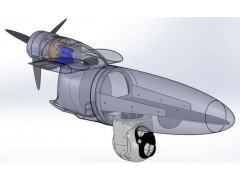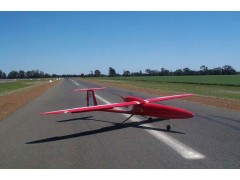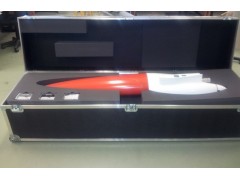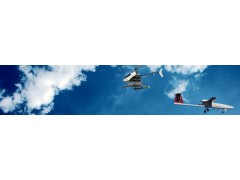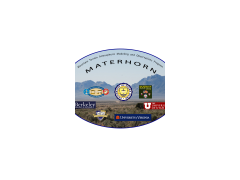


Search
|
Home » Welcome
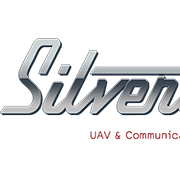
John Marquette established Silvertone® in Australia in 1958. John's company, Advance Radio Control, produced Silvertone® single channel valve equipment and later multi channel reed equipment, again using valves. In 1963 Bob Young purchased the Silvertone® radio manufacturing section and established Silvertone® Electronics. Thus Silvertone® may be considered the pioneers of radio control in Australia. From Single channel valve super-regenerative receivers to 24 channel solid state super-heterodyne digital proportional receivers has been a giant step and Silvertone® has gathered a wealth of experience in the process. Amongst our list of Australian R/C firsts are included the first commercial production of R/C gear which included single channel and reed, valve and transistor transmitter and receivers. In 1966 we produced the first Australian designed and built digital proportional system, the Silvertone® Mark 1. In 1971 Bob Young along with Brian Green formed the first Australian team to fly in the World Aerobatic championships. The late 1960s and early 1970s were the first of several peak periods in Silvertone® creativity. In 1969 we introduced the Silvertone® Mark VII system, a very advanced R/C system for its time. It was the first Australian R/C system to be written up in International magazines. The Mark VII was particularly well received in the USA, receiving an excellent review in RCM magazine. The Mark VII was the first Australian R/C system to feature narrow band spacing, frequency interlock and dual control. The Mark VII ushered in a new era in Australian R/C operations. The narrow band feature presented clubs with some interesting problems and opportunities which they had never encountered before. From a club point of view, the introduction of narrow band operations (from 50kHz down to 15kHz, increasing available frequencies from 6 to 18 frequency slots) completely revolutionised club R/C operations in Australia. The first problem was how to take advantage of the narrow band feature of the Mark VII, whilst maintaining safe operation for older and wider (40-50kHz) systems. The old peg-on transmitter system proved to be totally inadequate and actually unsafe in this situation. Silvertone®'s answer to this dilemma was to develop the Silvertone® Keyboard, a device that can safely control the simultaneous use of radio control systems of differing bandwidths. The Silvertone® keyboard is to this day still used in almost every R/C club in Australia and has since been declared the Australian National Standard Frequency Control System. All MAAA sanctioned contests must use the Silvertone® keyboard as the frequency control system. It is still to our knowledge the only variable bandwidth frequency control system available on the World market. The development of the Keyboard in turn led directly to the concept of frequency interlock to prevent accidental shoot-downs from transmitters left on in the pits. As each transmitter has it's own key in this system, the logical extension is to use that key to turn off the transmitter when the key is not in the Keyboard. Thus by plugging the key into the transmitter, power is removed from the electronics, thereby rendering the transmitter completely safe whilst in the transmitter pound. All Silvertone® transmitters built since 1969 have featured Frequency Interlock. In 1970 we undertook to radio control a full size Volkswago 1600TLE for a Volkswagon TV commercial. This was subsequently demonstrated all over NSW and proved to be of great interest to disabled people who could see the potential for a car that could be driven with two fingers. It was a real head turner when driven from the back seat with no driver up front. In 1973 we began to investigate the use of R/C aircraft in military training applications. To this end we began the development of all fibreglass aircraft, such as the Silvertone® Stingray shown below. This was intended as a proof of technology aircraft for later all fibreglass aircraft such as an all glass Weightlifter (never built) and a larger delta aircraft (De Havilland Enmoth) and ultimately the Silvertone® Flamingo®. Many Stingrays were sold to modellers throughout Australia. At the same time production commenced on the Silvertone® Weightlifter RPV, designed as one component of a company funded missile training system. Many of these were sold to various Government departments performing a variety of chores including atmospheric sampling, missile training, weapons testing etc. During the 1980's a series of disposable fast, small foam delta target aircraft were also built in this period and used for All Arms Air Defense live-fire training. This aircraft was immensely popular with the trainee gunners proving to be a very realistic target. The final aircraft in this series was a 60 powered, live-fire target/trainer supplied to the Australian Army. All of the projects above were the first of their kind in this country. We also pioneered such concepts as the first commercial model flying school when we set up the Silvertone® Flying School which operated for many years. This scheme evolved into the RCAS (NSW State) instructors training system before finally growing into the Model Aeronautical Association of Australia (MAAA) National Flight Training system. We also fostered many records, helping Silvertone® customers to establish records that stood for many years. Actually the official R/C Land Speed record is still held by Bob Young from Dec 1969. Along the way such projects as radio control full size cars, trucks and trains, machines, target RPV's, Hollywood movie robots, radio controlled buildings etc have provided interesting diversions and added to our store of R/C knowledge and experience. One of our more interesting experiences involved radio controlling the window washing robot used by the Sydney Opera House. Another being the designing and building of the R/C pyrotechnics trigger system used in the film trilogy 'Lord of the Rings'. One of the explosive sequences in Part 2 won an award for the best pyro scene. One project after another tumbled out of the Silvertone® workshop over the years in a wildly diverse array, contributing along the way to a very exciting and interesting life for all of those involved. And helpers there were aplenty. Far too many to name personally but they know who they are. Those men and women who helped design and build the equipment and the customers that commisioned the projects made all of the above possible and to them goes a special thank you. I could not have done it all on my own. However our first love has always been the radio control of model aircraft. Perhaps the following citation covering the MAAA Life Membership award granted to Bob Young in 1991 explains this most clearly: In the early 1990's we began investigating autonomous flight and aerial video photography. Using Weightlifters and a small Aerocommander sport model as the airborne test-beds we began testing various camera and autopilot systems. At about this time we made contact with Zina Kaye and her husband Snow who had a grant to investigate designing a UAV intended to take aerial real time video under control of web based customers. This UAV was intended to orbit over well known landmarks while web based customers controlled the camera angles and aircraft positions from their home computers. It was in effect an early attempt to do what Google Earth now does so well. Our flights on Farnborough Airport in the UK were a result of one of Zina's projects. This UAV shown below was the first Silvertone® purpose built and designed UAV and it used a PDC 3100 autopilot and a Crossbow IMU. This was the aircraft caught up in the incident during the Sydney Olympics which is described in Small UAVs and how they work. Zina christened it Observatine. Fitted with a Zenoah 60cc twin cylinder motor it flew very well. The three Silvertone® Mark 22 transmitters pictured alongside Observatine are high powered transmitters from a batch built for Continental RPV in California USA. These transmitters were used for controlling target RPVs over long distances on US military target ranges. Also in the late 1990s we turned this wealth of age-old experience towards creating an absolutely unique radio control system, the Silvertone® Mark 22. The 1990s were another very busy and productive time for Silvertone®. The Mark 22 has grown into something more exciting than we originally planned. The modular concept has virtually no limits and we are continuing to add new modules as time passes. The Mark 22 formed the basis for the Lord of the Rings R/C pyrotechnics trigger. The latest module is a dual control transmitter back. Thus fitting dual control to an existing transmitter is now merely a matter of purchasing a new back panel and plugging the leads onto the appropriate pins on the encoder PCB. System upgrades will be easy to fit and relatively inexpensive, thus the Mark 22 with its robust construction, ease of maintenance and upgrade capacity will serve its owners well into the 21st century. All Mark 22 transmitters and receivers were rated in 2001 for 10kHz operation in preparation for the introduction of this frequency spacing in early 2002, thereby maintaining the long tradition of being in the forefront of developments in narrow band operations in Australia. Now comes another very interesting part of the Silvertone® story. In 2005 we began to design what would ultimately become the Silvertone® Flamingo®, a truly unique UAV that has since captured hearts around the world with its elegant appearance, versatility and fabulous flying characteristics. From all of the foregoing it should be quite obvious the design of the Flamingo® was no accident. Years of intense R/C experience designing, testing and flying R/C systems and aircraft have culminated in a UAV which we are all proud to see carrying the Silvertone® Logo into the Future. In keeping with our past achievements we are currently starting work on an instructors course aimed at the new MAAA designated Self Guided Model Aircraft (SGMA) category. This work will feature a small electric powered Piper Cub which will be used as an ab initio trainer for introducing MAAA SGMA trainee instructors to the fine art of programming and operating small autopilots such as the ATTOPilot V2/V3 series. It is planned that this course will included the use of the ATTOPilot A/P, Ground Control System (GCS), setting up data links and plotting waypoints on Google Earth.
|

